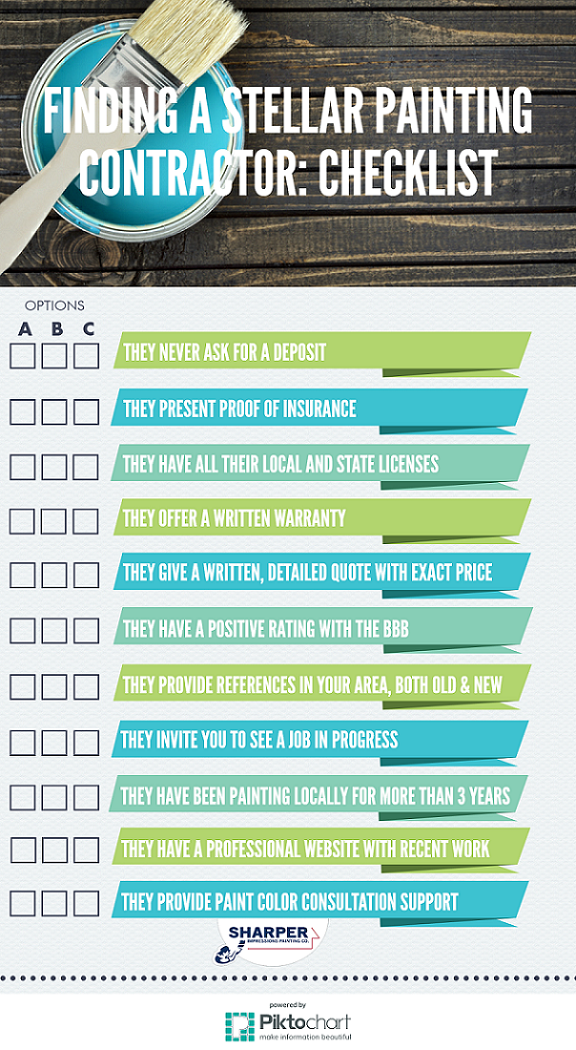To Guarantee The Success Of Your Paint Task, It Is Important To Be Aware Of The Substantial Differences Between Exterior And Interior Paint. Discover The Crucial Information You Require Before Beginning Your Task
To Guarantee The Success Of Your Paint Task, It Is Important To Be Aware Of The Substantial Differences Between Exterior And Interior Paint. Discover The Crucial Information You Require Before Beginning Your Task
Blog Article
Content Develop By-Pace Hegelund
When you're choosing between exterior and interior paint, it's important to recognize their fundamental differences that influence both performance and looks. Interior paints are crafted for lower VOC degrees and smoother surfaces, making them perfect for interior spaces, while exterior paints are designed to sustain rough climate condition and UV direct exposure. Each kind serves a distinct purpose, but recognizing when to make use of one over the other can considerably affect your task's end result. So, what factors should you take into consideration when making your choice?
Structure and Formulation
When picking between interior and exterior paint, understanding their composition and formulation is essential. Interior paints generally contain a reduced amount of unpredictable natural substances (VOCs), making them more secure for interior air high quality. You'll notice they frequently have a smoother surface, which boosts their capacity to withstand discolorations and enables simpler cleaning. They're made to stand up to the roughness of indoor environments, including varying moisture levels and temperature variations.
On the other hand, exterior paints are formulated to withstand harsher problems. They typically contain greater degrees of pigments and additives to resist fading from UV rays, in addition to to prevent mold and mold and mildew growth. Their structure consists of much more binders and materials, which offer far better adhesion to surface areas subjected to the elements. This makes certain the paint can stand up to rainfall, snow, and varying temperature levels without peeling or splitting.
Performance and Sturdiness
Assessing efficiency and longevity is crucial when selecting between interior and exterior paint. Inside paint is designed for surface areas that experience less damage. It normally resists fading and scuffing, making it perfect for living spaces and rooms. Nonetheless, it might not stand up well in high-moisture locations like kitchens and bathrooms without correct formula.
On the other hand, outside paint deals with harsher conditions. It's crafted to hold up against UV rays, rainfall, and temperature level fluctuations. This sort of paint often consists of additives that avoid mold and mold development, guaranteeing long life in numerous climates. When you use external paint, you can expect it to last several years longer than interior paint, offered it's applied appropriately.
An additional vital difference depends on the surface options. Inside paints commonly have a variety of finishes for visual charm, while exterior paints focus on toughness over shine. If you're seeking something that can handle the aspects, outside paint is your best option.
In contrast, if you're focused on indoor visual appeals with less problem for extreme conditions, interior paint might be suitable. Inevitably, your selection must line up with the particular demands of the environment.
Visual Factors to consider
A fresh layer of paint can change a room, but aesthetic factors to consider play a vital role in your option between interior and exterior options. When you're selecting paint, consider the mood you wish to produce. Inside paint enables you to check out a broader series of colors and surfaces, enabling you to express your personal design and enhance your home's ambiance. Whether you opt for soft pastels or vibrant tones, the best indoor paint can make your spaces feel relaxing, lively, or serene.
On the other hand, exterior paint needs to align with your home's design and the surrounding environment. Here, you're not just making a style declaration; you're likewise thinking about aesthetic appeal. Selecting house painter that harmonize with your community can increase your home's value and visual allure. Remember that https://daltonxeany.targetblogs.com/31905878/ignored-yet-critical-element-when-hiring-exterior-painters-can-make-or-break-your-project-learn-what-it-is-for-successful-outcomes is additionally subject to fading and weather adjustments, so picking an ageless color can save you from regular repainting.
Inevitably, consider how each alternative fits your vision. By aligning your paint option with your desired visual, you can develop areas that reflect your personality while keeping functionality.
Verdict
When it pertains to choosing paint, comprehending the crucial differences in between exterior and interior options is necessary. Interior paints concentrate on aesthetic appeals and low VOCs, making them perfect for boosting your interior areas. On the other hand, exterior paints are created for resilience and climate resistance, shielding your home from the aspects. By considering your certain requirements and the environment, you can confidently select the appropriate paint to attain the look and long life you want for your room.
